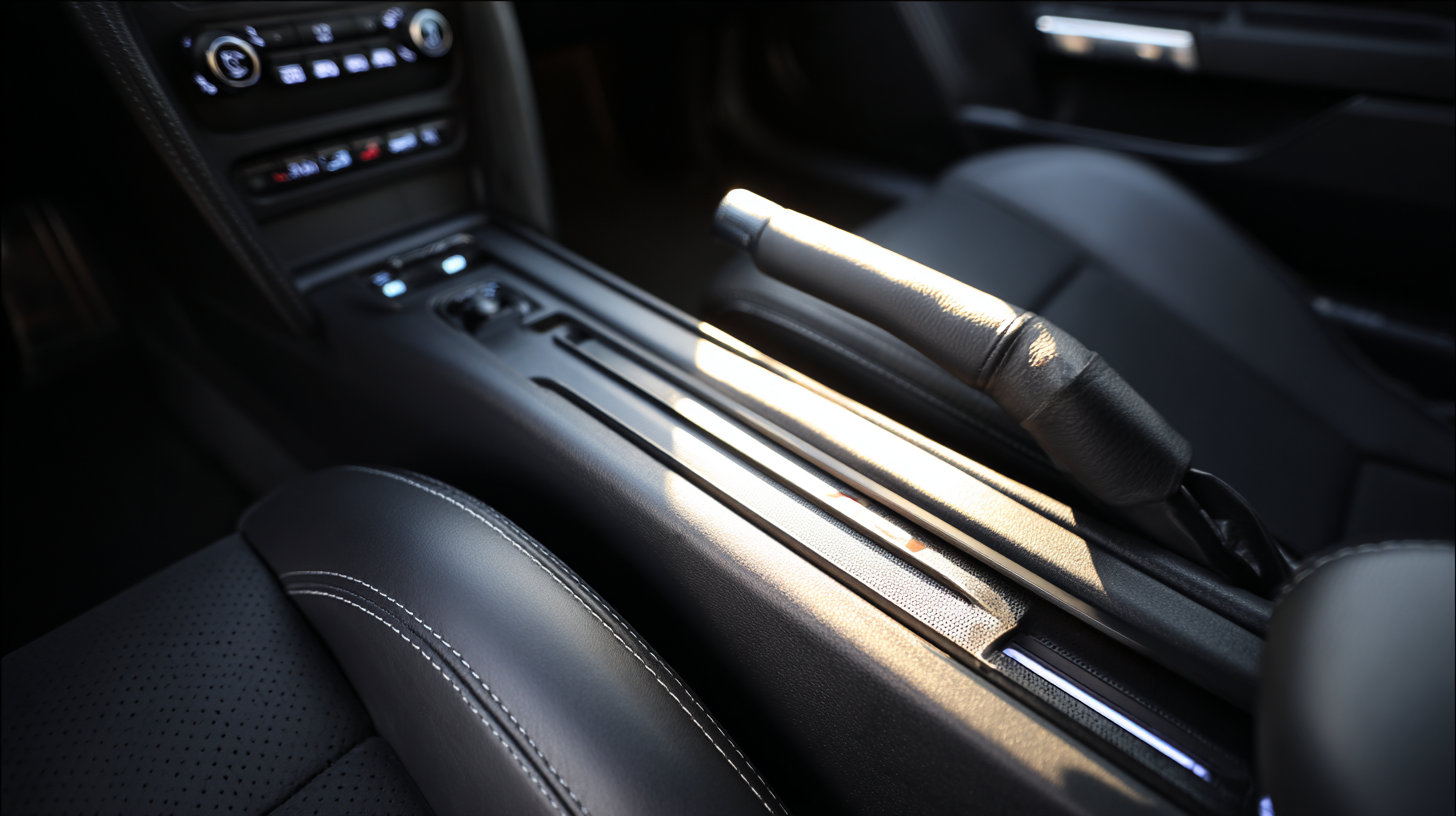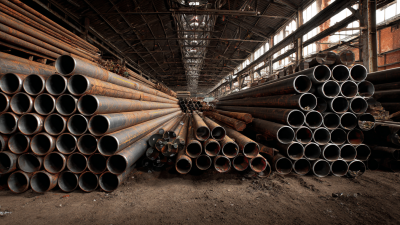Leave Your Message
 Choosing the right Interior Tube for your vehicle is crucial for optimizing performance and ensuring a safe and smooth ride. According to a recent study published by the Tire Retread Information Bureau, approximately 90% of vehicle performance is influenced by tire quality and related components, including interior tubes. The right interior tube can enhance fuel efficiency, improve handling, and extend the lifespan of tires. As vehicles become more sophisticated, understanding the specifications and requirements of various interior tubes is essential for both everyday drivers and automotive enthusiasts alike. This guide aims to provide valuable insights into selecting the best interior tube that meets your vehicle's specific needs, taking into consideration factors such as material composition, size compatibility, and performance characteristics. By making an informed choice, drivers can significantly improve their vehicle's overall performance and reliability on the road.
Choosing the right Interior Tube for your vehicle is crucial for optimizing performance and ensuring a safe and smooth ride. According to a recent study published by the Tire Retread Information Bureau, approximately 90% of vehicle performance is influenced by tire quality and related components, including interior tubes. The right interior tube can enhance fuel efficiency, improve handling, and extend the lifespan of tires. As vehicles become more sophisticated, understanding the specifications and requirements of various interior tubes is essential for both everyday drivers and automotive enthusiasts alike. This guide aims to provide valuable insights into selecting the best interior tube that meets your vehicle's specific needs, taking into consideration factors such as material composition, size compatibility, and performance characteristics. By making an informed choice, drivers can significantly improve their vehicle's overall performance and reliability on the road.
 When selecting the appropriate interior tube for your vehicle, it's essential to understand the various types available and their specific performance benefits. Traditionally, there are three main categories of interior tubes: butyl, natural rubber, and latex. According to the Tire Industry Association, butyl tubes are known for their excellent air retention properties, making them ideal for vehicles that undergo long-distance travel and require consistent performance. In fact, studies show that butyl tubes can reduce air loss rates by up to 50% when compared to natural rubber tubes, which can be advantageous for maintaining optimal tire pressure over time.
When selecting the appropriate interior tube for your vehicle, it's essential to understand the various types available and their specific performance benefits. Traditionally, there are three main categories of interior tubes: butyl, natural rubber, and latex. According to the Tire Industry Association, butyl tubes are known for their excellent air retention properties, making them ideal for vehicles that undergo long-distance travel and require consistent performance. In fact, studies show that butyl tubes can reduce air loss rates by up to 50% when compared to natural rubber tubes, which can be advantageous for maintaining optimal tire pressure over time.
Natural rubber tubes, on the other hand, offer superior elasticity and are often favored for off-road applications due to their ability to absorb shocks and vibrations. The Rubber Manufacturers Association highlights that these tubes are highly resistant to damage from impacts and rough terrains, making them suitable for vehicles frequently used in rugged conditions. Latex tubes, while less commonly used, provide lightweight options that are typically utilized in high-performance or racing contexts due to their lower rolling resistance, enabling increased speed. However, they may require more frequent maintenance to manage air retention. Understanding these differences can significantly influence your vehicle's performance and overall driving experience.
When selecting the right interior tube for your vehicle, it’s crucial to assess your vehicle's performance requirements. Consider the type of driving you will be doing—off-road, highway, racing—and the typical conditions you will encounter. Each scenario demands different tube characteristics, such as strength and flexibility. For instance, racing applications often require lightweight tubes that can withstand high speeds and sudden impacts, while off-road vehicles may need more durable options to endure rough terrains.
Tips: Always check the recommended specifications from your vehicle manufacturer. They often provide insights into the most suitable interior tube materials and dimensions to optimize performance. Additionally, consider your vehicle's weight and load capacity, as these factors directly influence tube selection and overall performance.
Furthermore, pay attention to the climate and environment where your vehicle operates. Temperature fluctuations, humidity, and exposure to elements can affect tube integrity. Using a tube material specifically designed to withstand extreme conditions can enhance your vehicle’s longevity and performance. Ensure you select a tube that complements not only your driving style but also the wear and tear from environmental factors.
When selecting an interior tube for your vehicle, the material options can significantly affect overall performance, durability, and ride quality. Common materials include rubber, PVC, and butyl, each with distinct characteristics.
Rubber tubes offer excellent elasticity and resilience, making them ideal for maintaining optimal pressure under various conditions. However, they may be more susceptible to punctures and wear over time. In contrast, PVC tubes are lighter and more affordable, although they tend to provide less performance in high-temperature situations compared to rubber.
Butyl, a synthetic rubber, represents a balance between the two, offering lower air loss rates and improved resistance to temperature fluctuations. This makes butyl tubes an excellent choice for performance-driven vehicles. Additionally, the choice of material directly influences aspects like handling and fuel efficiency.
A well-chosen interior tube not only enhances the driving experience but also ensures that the vehicle performs at its best, aligning with the owner's specific needs and preferences. Understanding the properties of these materials allows vehicle owners to make informed decisions that optimize their vehicle's performance.
When selecting the right interior tube for your vehicle, it's essential to recognize some common mistakes that can compromise both performance and safety. One frequent error is neglecting the specifications of the original equipment. Many vehicle owners assume that any tube will suffice without considering factors such as size, material, and pressure ratings. Using a tube that doesn’t match these specifications can lead to poor fitment, leading to potential failures while driving.
Another common pitfall is overlooking the quality of the tube material. Some may opt for cheaper alternatives without realizing that low-quality tubes can wear out quickly or fail under pressure. Additionally, not taking into account the specific driving conditions—such as off-road vs. highway use—can impact the overall durability and performance of the interior tube. It’s crucial to do thorough research and consult with experts to ensure that the chosen interior tube meets both the technical requirements and offers reliable performance for your vehicle’s specific needs.

Maintaining the interior tubes of your vehicle is essential for ensuring optimal performance and longevity. Proper care can greatly enhance the lifespan of these components, avoiding costly replacements. According to a recent industry report by the Tire Industry Association, regular maintenance can increase the lifespan of interior tubes by up to 30%. This highlights the importance of proactive care in vehicle performance.
To enhance the durability of your interior tubes, regularly inspect them for any signs of wear or damage. Look for cracks, bulges, or excessive dirt accumulation. Keeping your tires properly inflated is also crucial, as under-inflated tires can lead to overheating, significantly accelerating wear on the tubes. As noted by the Rubber Manufacturers Association, maintaining the correct air pressure can also improve fuel efficiency by up to 3.3%.
Another effective maintenance tip is to store your vehicle in a climate-controlled environment when possible. Extreme temperatures can degrade rubber materials, leading to premature failure. Additionally, consider rotating your tires every 6,000 to 8,000 miles to ensure even wear. Following these practices can help extend the life of your interior tubes, ultimately contributing to a safer, more efficient driving experience.







